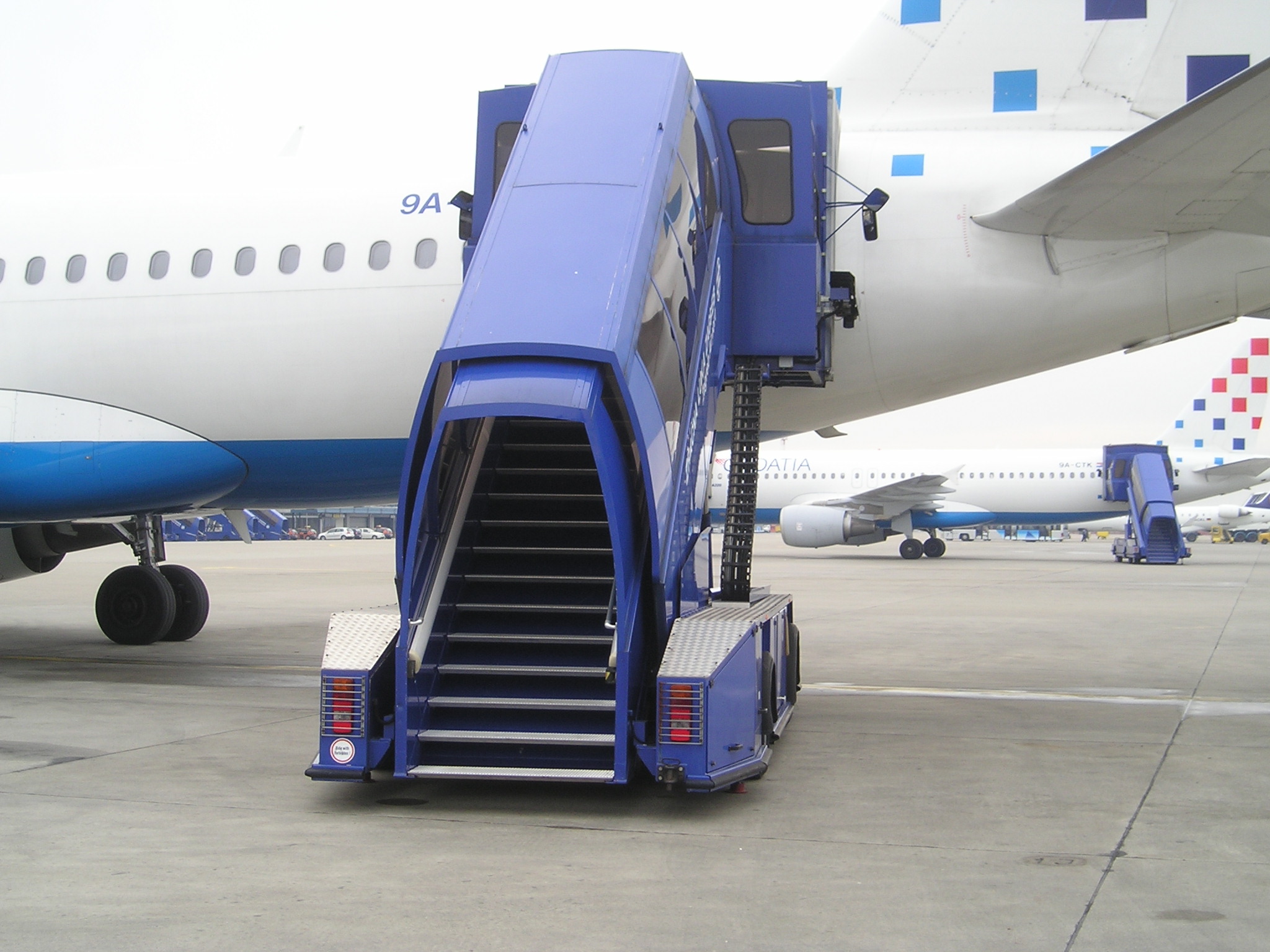Apply These 5 Secret Techniques To Improve Airplane Stairs
Introduction:
Air travel has become an integral part of our lives, connecting people and cultures across the globe. While much attention is given to the aircraft’s design and technology, one often overlooked aspect is the boarding process. Airplane stairs, the gateway between the terminal and the aircraft, play a crucial role in ensuring a seamless boarding experience. In this article, we will explore five secret techniques to enhance and optimize airplane stairs for a more efficient and passenger-friendly boarding process.

Ergonomic Design:
The first secret technique revolves around the design of airplane stairs. Often considered a utilitarian component, stairs can be transformed into a passenger-friendly asset through ergonomic design principles. Traditional stairs may pose challenges for passengers with mobility issues or those carrying heavy luggage. Implementing gentle slopes, wider steps, and handrails can make ascending and descending more comfortable for all passengers.
Furthermore, incorporating adjustable stairs that can cater to different aircraft door heights ensures flexibility and compatibility with various airplane models. This not only streamlines the boarding process but also addresses the diverse range of aircraft in service today.
Advanced Materials and Technology:
The second secret technique involves the use of advanced materials and technology to enhance the functionality and durability of airplane stairs. Lightweight yet robust materials, such as carbon fiber and high-strength alloys, can contribute to the overall efficiency of the stairs. Reduced weight can improve fuel efficiency and lower operational costs for airlines.
Incorporating smart technologies like sensors and automated systems can further optimize the boarding process. For example, sensors that detect passenger movement and adjust the angle or height of the stairs automatically can enhance safety and convenience. These technological advancements not only improve efficiency but also contribute to a modern and sophisticated boarding experience.
Weather-Resistant Design:
Weather conditions can significantly impact the efficiency and safety of airplane stairs. The third secret technique involves designing stairs that can withstand various weather elements, ensuring a reliable boarding process regardless of the environment. For instance, anti-slip surfaces and weather-resistant coatings can prevent accidents during rain or snow.

Additionally, incorporating features like retractable canopies or shields can protect passengers from the elements during the boarding process. A weather-resistant design not only ensures passenger safety but also minimizes disruptions caused by inclement weather, contributing to a more punctual and reliable air travel experience.
Streamlined Integration with Airport Infrastructure:
The fourth secret technique focuses on the integration of airplane stairs with existing airport infrastructure. Seamless coordination between the terminal, aircraft, and ground services is crucial for an efficient boarding process. Implementing technologies like RFID (Radio-Frequency Identification) for luggage tracking and passenger identification can enhance coordination and minimize delays.
Moreover, designing stairs with built-in connectivity features can facilitate real-time communication between the aircraft and ground personnel. This enables proactive decision-making and efficient management of boarding procedures. A well-integrated system ensures that airplane stairs are not just standalone components but integral parts of a synchronized and smooth boarding operation.

Passenger-Focused Amenities:
The final secret technique revolves around making airplane stairs more than just a means of boarding. Introducing passenger-focused amenities can transform the boarding experience into a positive and memorable one. For instance, incorporating comfortable seating areas, ambient lighting, and informational displays can create a welcoming atmosphere for passengers waiting to board.
Furthermore, providing amenities such as Wi-Fi connectivity or charging stations on the stairs can enhance the overall passenger experience. This approach not only improves customer satisfaction but also adds a touch of luxury to the boarding process, making it an extension of the overall travel experience.

Conclusion:
In conclusion, the often-overlooked airplane stairs can be optimized to significantly improve the efficiency and passenger experience during the boarding process. By embracing ergonomic design, advanced materials and technology, weather-resistant features, streamlined integration with airport infrastructure, and passenger-focused amenities, airlines can elevate the boarding experience to new heights. As the aviation industry continues to evolve, investing in these secret techniques for airplane stairs can contribute to a more seamless, comfortable, and enjoyable air travel experience for passengers worldwide.
1: Why do airplanes have stairs? 1: Airplanes have stairs to facilitate the boarding and deboarding of passengers and crew. They are especially useful when an aircraft is parked at an airport gate that doesn’t have a jet bridge.
2: Are airplane stairs used for emergency exits? 2: In most cases, airplane stairs are not designed as emergency exits. Emergency exits are typically located near the wings and at the rear of the aircraft. Stairs are primarily for passenger access.
3: How do passengers use airplane stairs? 3: Passengers use airplane stairs to embark or disembark the aircraft. Ground crew positions the stairs at the aircraft door, and passengers walk up or down them to access the cabin or the tarmac.
4: Are airplane stairs used on all types of aircraft? 4: No, not all aircraft have built-in stairs. Larger aircraft, such as wide-body jets, often use mobile stairs or jet bridges at airports. Smaller aircraft, like regional jets or private planes, may have built-in stairs.
5: Can airplane stairs be retracted during flight? 5: Generally, airplane stairs are not retractable during flight. They are designed to be deployed when the aircraft is on the ground and stationary. Once the aircraft is airborne, the stairs remain secured.
6: Do all airports use airplane stairs for boarding? 6: No, many modern airports use jet bridges for boarding and deboarding. Jet bridges provide a covered and climate-controlled walkway between the terminal and the aircraft, eliminating the need for stairs in some situations.
7: How are airplane stairs operated? 7: Airplane stairs are usually operated by ground crew or airline staff. They can be attached to the aircraft and controlled either manually or through hydraulics, depending on the type of stairs and the aircraft model.
